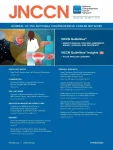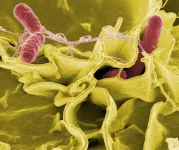INFORMATION:
Evolution: Speciation in the presence of gene flow
2021-01-13
(Press-News.org) Spatial isolation is known to promote speciation - but researchers at Ludwig-Maximilians-Universitaet (LMU) in Munich have now shown that, at least in yeast, the opposite is also true. New ecological variants can also evolve within thoroughly mixed populations.
The idea that speciation is based on the selection of variants that are better adapted to the local environmental conditions is at the heart of Charles Darwin's theory of the origin of species - and it is now known to be a central component of biological evolution, and thus of biodiversity. Geographic isolation of populations is often regarded as a necessary condition for ecotypes to diverge and eventually form new species. When populations of a given species are separated by geographic barriers, favorable mutations that emerge in either can become fixed locally, as mating between the two populations is precluded. Whether or not speciation can occur under conditions in which gene flow between two populations is possible - such that genetic mixing can still occur - remains controversial. In order to resolve the issue, LMU evolutionary biologist Jochen Wolf and his group in cooperation with Simone Immler (University of East Anglia, UK) have used baker's yeast as a model system to experimentally explore what happens when the degree of gene flow between genetically differentiated populations is gradually increased.
"The starting point for this project, which has now been running for 6 years, was a single founder cell, which gave rise to our original population," says Wolf. "We then followed the accumulation of mutations within this population over the course of many generations." Starting from the original ancestor, the scientists first selected cells that floated in a suspension on top or sank to the bottom. In this way, they obtained two populations which were adapted to different 'habitats' - referred to simply as 'top' and 'bottom'. The two behaviors are related to differences in the morphology of the cells and in their propensity to from multi-cellular clusters with one another.
Having obtained these genetically differentiated populations, the researchers proceeded to mix them in various proportions and monitored their subsequent evolution. "We first observed what would be expected according to the classical isolation model, when the top and bottom populations were kept strictly separated from one another," says Wolf. Under these conditions, the two 'geographically' isolated populations continued to adapt to the demands of their respective niches and rapidly diverged from each other, becoming clearly distinct with time. For example, the top cells preferentially reproduced by asexual cell division, and therefore grew at a much higher rate than their bottom counterparts. Owing to the concomitant drop in the frequency of mating, the cells in the upper compartment also produced fewer sexual spores. "This finding confirms that the effects of selection do not remain constant over an organism's life cycle. Instead, selection is associated with 'trade-offs'. In other words, mutations that may be advantageous in one context may be deleterious in another," Wolf explains
In the next step, Wolf and his colleagues simulated the effects of migration between the two populations. They did so by first adding approximately 1% of the minority population to the dominant fraction, and then progressively increasing the proportion of the former in each succeeding generation until the two populations had been thoroughly mixed. Theoretical models suggest that mixing should lead to a homogenization of the gene pool, and should therefore lead to a reduction in the diversity of the mixed population. This effect was in fact observed at intermediate levels of mixing. Although such mixtures continue to evolve and their members can increase their fitness relative to the ancestral population, distinctly different variants can no longer be discerned within them.
"But to our surprise, when the populations had been thoroughly mixed over time, we found very marked differences in phenotype," says Wolf. "When the tap is turned on fully, so to speak, one suddenly finds that mixtures contain two distinct variants, a generalist and a specialist." The generalist can survive equally well in the top or bottom compartment. This is not true of the specialist. But it divides at a faster rate than the generalist, and can therefore compensate for its lack of versatility. In Wolf's view, the emergence of these two classes can be regarded as the first step in a speciation process which takes place in the presence of maximal gene flow.
In addition to these phenotypic results, the team characterized the full genetic inventory of all populations. These genetic experiments show that adaptation to top and bottom compartments in the absence of gene flow is accompanied by the selection of genetic variants from among those that were already present in the progenitor population. In contrast, the emergence of specialist lineages in 50:50 mixtures is attributable to newly acquired mutations. And such mutations are obviously not in short supply: "The mutations seen in our replicates are completely independent. We very seldom see the same mutation in different samples - yet the phenotypic division between generalists and specialists in completely mixed populations has been observed repeatedly," Wolf says.
These results are of significance in the context of how populations react to alterations in the character and distribution of variable niches. "It has always been assumed that interruption of gene flow is a prerequisite for adaptive divergence," says Wolf. "But our study shows that, even when populations are highly connected, diverse adaptations can nevertheless emerge, such that all available niches can be filled."
ELSE PRESS RELEASES FROM THIS DATE:
New research in JNCCN highlights dangerous disparities for life-saving cancer screening
2021-01-13
PLYMOUTH MEETING, PA [January 13, 2021] -- New research in the January 2021 issue of JNCCN--Journal of the National Comprehensive Cancer Network finds more than a third of eligible people miss timely screening tests for colorectal cancer and at least a quarter appear to miss timely screening tests for breast and cervical cancers. The study comes from the University of Alberta, Faculty of Medicine and Dentistry in Alberta, Canada, with findings based on self-reported results from the Canadian Community Health Survey (CCHS) from 2007-2016. According to the author, the results also ...
NIH scientists study salmonella swimming behavior as clues to infection
2021-01-13
WHAT:
Salmonella enterica serovar Typhimurium bacteria (S. Typhimurium) commonly cause human gastroenteritis, inflammation of the lining of the intestines. The bacteria live inside the gut and can infect the epithelial cells that line its surface. Many studies have shown that Salmonella use a "run-and-tumble" method of short swimming periods (runs) punctuated by tumbles when they randomly change direction, but how they move within the gut is not well understood.
National Institutes of Health scientists and their colleagues believe they have identified a S. Typhimurium protein, McpC ...
Getting romantic at home wearing an EEG cap
2021-01-13
Research into the neuronal basis of emotion processing has so far mostly taken place in the laboratory, i.e. in unrealistic conditions. Bochum-based biopsychologists have now studied couples in more natural conditions. Using electroencephalography (EEG), they recorded the brain activity of romantic couples at home while they cuddled, kissed or talked about happy memories together. The results confirmed the theory that positive emotions are mainly processed in the left half of the brain.
A group led by Dr. Julian Packheiser, Gesa Berretz, Celine Bahr, Lynn Schockenhoff and Professor Sebastian Ocklenburg from the Department of Biopsychology at Ruhr-Universität Bochum ...
BU researchers uncover viral small RNAs in mosquito cells
2021-01-13
(Boston)--Researchers from Boston University School of Medicine (BUSM) provide a new genomics resource that details the small RNA transcriptomes (gene expression) of four bio-medically important mosquito species.
This is the first study to provide a platform for biologists to compare the characteristics of these small RNAs between these four mosquitoes as well as the most widely used insects for genetic experiments, the fruit fly, Drosophila. Although previous studies looked at each of the individual mosquito species separately, this study is the first to allow comparisons between all four species.
"Although ...
How to keep drones flying when a motor fails
2021-01-13
As anxious passengers are often reassured, commercial aircrafts can easily continue to fly even if one of the engines stops working. But for drones with four propellers - also known as quadcopters - the failure of one motor is a bigger problem. With only three rotors working, the drone loses stability and inevitably crashes unless an emergency control strategy sets in.
Researchers at the University of Zurich and the Delft University of Technology have now found a solution to this problem: They show that information from onboard cameras can be used to stabilize the drone and keep it flying autonomously after one rotor suddenly gives out.
Spinning like a ballerina
"When one rotor fails, the drone begins to spin ...
The meat of the matter: Environmental dissemination of beef cattle agrochemicals
2021-01-13
A recent Point of Reference article, "The meat of the matter: Environmental dissemination of beef cattle agrochemicals," published in Environmental Toxicology and Chemistry, points at synthetic chemical cocktails being emitted from cattle feed yards into the environment and how they can impact our ecosystem and our health.
Industrial meat production facilities have a bad reputation for their impact on the environment. Concentrated animal feeding operations (CAFOs) are known to release greenhouse gases related to global warming and for discharge of manure to watersheds, which affects water quality. A less publicized impact of modern beef production is the excessive use of ...
Infection biology: How one pathogen evades the immune system
2021-01-13
Our immune system is never idle. Their task is to detect and eliminate invasive pathogens, and they have no time to lose. The adaptive immune system identifies infectious organisms by recognizing foreign proteins on the surfaces of bacteria, viruses and unicellular protozoans. The interaction of these antigens with immune cells triggers a series of downstream events, which in most cases leads to the elimination of the pathogen.
But pathogenic organisms have developed strategies that enable them to escape detection by the immune system, and the strategies employed by remotely related organisms are often remarkably similar to each other. One way of confusing the immune system is to increase the structural heterogeneity of the antigens it encounters. ...
Temple researchers identify cardiac protein that causes different types of heart failure
2021-01-13
(Philadelphia, PA) - Like a failing fuel pump that causes a loss of engine power in a car, a diseased heart can take a serious toll on the body's performance. For some patients, tasks like walking up a flight of stairs or walking across a room eventually turn into exhausting endeavors. This is because, over time, regardless of the underlying cause, heart damage typically progresses, owing to a constant barrage of oxidative stress and toxic lipids that alter heart cell energetics and, ultimately, the ability of the heart to function normally.
Oxidative stress occurs when harmful oxygen-containing molecules outnumber helpful antioxidants, leading to damaging reactions with proteins, DNA, and other cell components. ...
Impact of COVID lockdown on aeromedical retrievals in remote parts of Australia
2021-01-13
New data released this week by Australian researchers reveals the impact of the COVID-19 lockdown period on aeromedical retrievals in rural and remote regions.
Researchers say while the social isolation measures led to a reduction in overall aeromedical activity during the lockdown in 2020, once the restrictions were lifted, evacuations increased significantly.
These findings are published in the Internal Medicine Journal, comparing aeromedical evacuation trends in Australia during the pre-restriction, lockdown and post-restriction periods last ...
Perceptions of police using PPE during the pandemic - SFU study
2021-01-13
A Simon Fraser University study on public perceptions of police officers wearing personal protective equipment (PPE) during the current pandemic finds that most PPE renders positive perceptions of police, while some equipment, including full-face respirator masks, may be viewed more negatively. The research was published January 9 in the Journal of Experimental Criminology.
Led by SFU criminology assistant professor Rylan Simpson and MA student Ryan Sandrin, the online experimental study drew on a sample of 117 participants residing in North America. The participants were randomly assigned to read one of three fictitious news articles that were either pro-PPE (highlighting health benefits), neutral or anti-PPE (lacking health benefits). Participants were then asked to rate 12 ...



